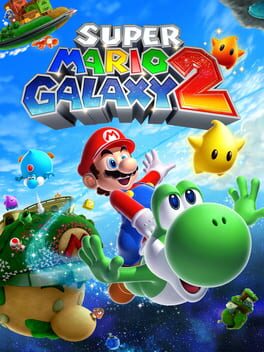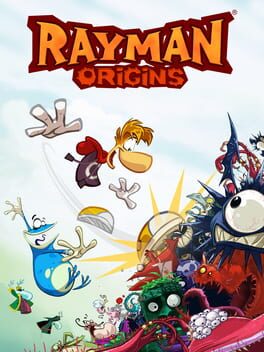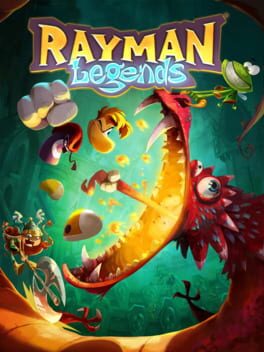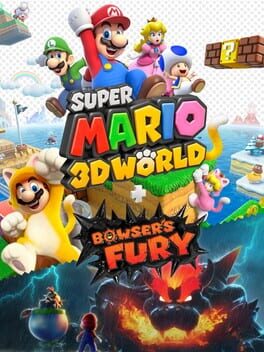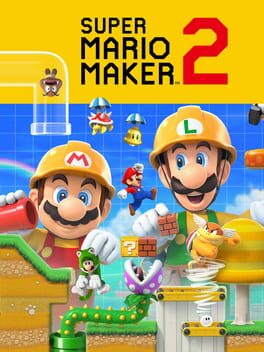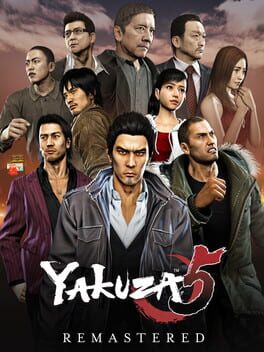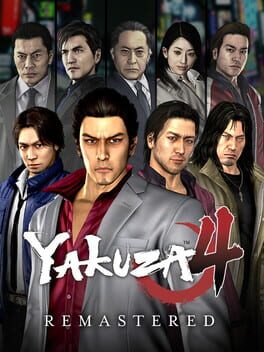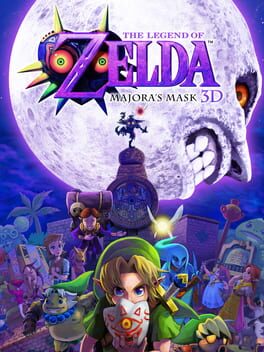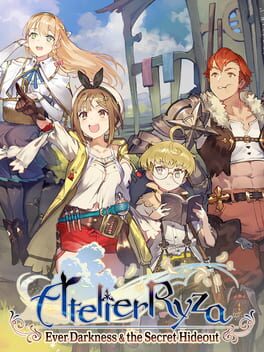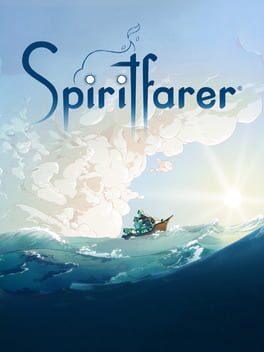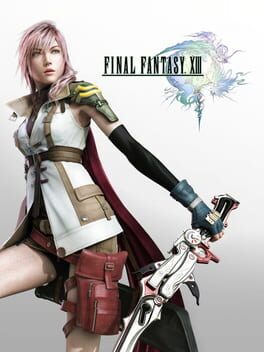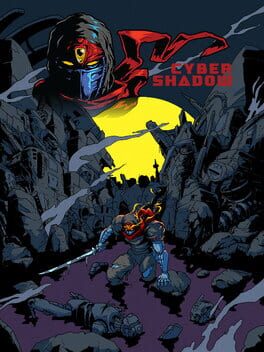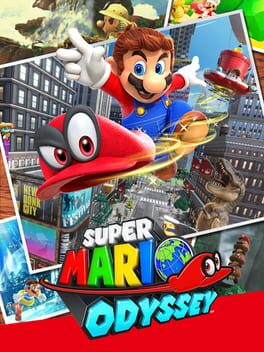Goldfield
2010
Super Mario Galaxy 2, you are full fair, 'tis true, but Super Mario Galaxy fairer is than you.
SMG2 is a betrayal of what was dared and greatly done in the masterpiece that is SMG. It is as shallow as it is deceitful. SMG2 takes the heartwarming plot of SMG, the relationships Mario has formed with Rosalina and the Lumas, the rebirth of the universe, tosses it in the toilet and flushes it, because Shigeru Miyamoto foolishly thinks Mario or Zelda games have no need for stories.
Granted, its refined gameplay is an improvement on what SMG created, but it also lacks the love of experimentation and it consequently went the safe way. Super Mario Galaxy 2 got rid off the hub world, levels that had a more explorative and atmospheric theme, Ice Mario and Flying Mario.
Super Mario Galaxy 2 is a very good game, but Super Mario Galaxy is a thousand times better.
SMG2 is a betrayal of what was dared and greatly done in the masterpiece that is SMG. It is as shallow as it is deceitful. SMG2 takes the heartwarming plot of SMG, the relationships Mario has formed with Rosalina and the Lumas, the rebirth of the universe, tosses it in the toilet and flushes it, because Shigeru Miyamoto foolishly thinks Mario or Zelda games have no need for stories.
Granted, its refined gameplay is an improvement on what SMG created, but it also lacks the love of experimentation and it consequently went the safe way. Super Mario Galaxy 2 got rid off the hub world, levels that had a more explorative and atmospheric theme, Ice Mario and Flying Mario.
Super Mario Galaxy 2 is a very good game, but Super Mario Galaxy is a thousand times better.
2011
Infinitely inferior to Rayman Legends in each and every aspect.
Rayman Origins convinced me with amazing level design, smooth controls, an inspiring score and charming visuals, but it failed to overwhelm me like Rayman Legends did. Whenever I thought “Rayman Legends reached a climax, it’s impossible to top that”, Rayman Legends proved me wrong. That wasn’t the case with Origins, however.
While its level design is almost god tier, Origins’ stages do not offer much variety and the from room to room thing heavily interrupted the flow. The mosquito levels are fun, though not as powerful as they are in Cuphead. They lack of escalation and climax. The Treasure Chest levels aren’t as spectacular as the music stages in Rayman Legends, but they are still entertaining, since the gameplay flow is incredibly smooth. The “bosses” were unbelievably disappointing. The letdown of this game.
Although I criticized this game more than I praised it, because comparison was unavoidable — it’s an amazing game. I’d recommend this game, but since 40 of its best stages are in Rayman Legends, I don’t see a reason to not recommend Legends first. And if you’ve played Legends already, I don’t see many reasons to pay 20 bucks for 20 new levels you haven’t experienced. Origins lost a lot of its value due to the existence of Legends.
Rayman Origins convinced me with amazing level design, smooth controls, an inspiring score and charming visuals, but it failed to overwhelm me like Rayman Legends did. Whenever I thought “Rayman Legends reached a climax, it’s impossible to top that”, Rayman Legends proved me wrong. That wasn’t the case with Origins, however.
While its level design is almost god tier, Origins’ stages do not offer much variety and the from room to room thing heavily interrupted the flow. The mosquito levels are fun, though not as powerful as they are in Cuphead. They lack of escalation and climax. The Treasure Chest levels aren’t as spectacular as the music stages in Rayman Legends, but they are still entertaining, since the gameplay flow is incredibly smooth. The “bosses” were unbelievably disappointing. The letdown of this game.
Although I criticized this game more than I praised it, because comparison was unavoidable — it’s an amazing game. I’d recommend this game, but since 40 of its best stages are in Rayman Legends, I don’t see a reason to not recommend Legends first. And if you’ve played Legends already, I don’t see many reasons to pay 20 bucks for 20 new levels you haven’t experienced. Origins lost a lot of its value due to the existence of Legends.
2013
I never thought a great deal of Rayman until I started Rayman Legends on the Nintendo Switch just yesterday.
My first impression was amazing. I immediately fell in love with the the hand-drawn graphics and the delightful animations and charming behaviors of Rayman, the creatures and the enemies. The levels are beautifully drawn and rich of detail. Everything is moving and feels like a living painting.
The controls are perfectly smooth and feel incredibly intuitive and Rayman’s movement is basic, yet various. It is the perfect mix of magnificent controls, wonderful flow and superlative level design.
Rayman Legends’ soundtrack is as various as it is atmospherically immersive, surprisingly experimental and totally frisky. One-eyed Harpist amazed me with interesting vocals, Lost in the Clouds gripped my heart, Orchestral Chaos impressed me with a playful score and the music stages are on a whole different level of spectacle!
My first impression was amazing. I immediately fell in love with the the hand-drawn graphics and the delightful animations and charming behaviors of Rayman, the creatures and the enemies. The levels are beautifully drawn and rich of detail. Everything is moving and feels like a living painting.
The controls are perfectly smooth and feel incredibly intuitive and Rayman’s movement is basic, yet various. It is the perfect mix of magnificent controls, wonderful flow and superlative level design.
Rayman Legends’ soundtrack is as various as it is atmospherically immersive, surprisingly experimental and totally frisky. One-eyed Harpist amazed me with interesting vocals, Lost in the Clouds gripped my heart, Orchestral Chaos impressed me with a playful score and the music stages are on a whole different level of spectacle!
Super Mario 3D World is a very delicate transition of Super Mario Bros. courses into 3D and captivates with an incredible level design and creative ideas. Finding all secrets and completing this game is a fun challenge.
Mario has been granted new moves and his movement speed is higher than ever — which allows him to jump even further.
This time, 3D World comes with an optional online multiplayer (which Shigeru Miyamoto scrubbed for the Wii U version) and I’m fascinated by it, since I didn’t experience many lags. It almost works flawlessly. No online multiplayer for Bowser’s Fury, though.
Bowser’s Fury is a sandbox Mario with the mechanics of 3D World and surprises with an unexpected spectacle, without losing its focus on gameplay. This addition is full of unusual surprises. When I listened to its soundtrack, I wasn’t sure if I’m playing a Super Mario game or Shin Megami Tensei.
Bowser’s Fury contains a lot of Super Mario Sunshine references, so I immediately felt in love with it, since Sunshine is one of my most beloved childhood games.
Mario has been granted new moves and his movement speed is higher than ever — which allows him to jump even further.
This time, 3D World comes with an optional online multiplayer (which Shigeru Miyamoto scrubbed for the Wii U version) and I’m fascinated by it, since I didn’t experience many lags. It almost works flawlessly. No online multiplayer for Bowser’s Fury, though.
Bowser’s Fury is a sandbox Mario with the mechanics of 3D World and surprises with an unexpected spectacle, without losing its focus on gameplay. This addition is full of unusual surprises. When I listened to its soundtrack, I wasn’t sure if I’m playing a Super Mario game or Shin Megami Tensei.
Bowser’s Fury contains a lot of Super Mario Sunshine references, so I immediately felt in love with it, since Sunshine is one of my most beloved childhood games.
2019
Super Mario Maker 2 titillates the builders’ creativity with a bunch of themes, a lot of game changing elements and various tools that might shackle them tighter to this game than a Chain Chomp on a wooden stake.
If you prefer playing courses instead of building them, this game offers an almost infinite number of levels and will show you new mechanics you haven’t seen before once in a while.
Its horrific net code makes it impossible to play this game with others and it’s a crime that you need an online subscription to share your levels with others or to play others’ courses.
If you prefer playing courses instead of building them, this game offers an almost infinite number of levels and will show you new mechanics you haven’t seen before once in a while.
Its horrific net code makes it impossible to play this game with others and it’s a crime that you need an online subscription to share your levels with others or to play others’ courses.
Final Fantasy X is an emotionally gripping story about the innocence of love and unavoidable sacrifices accompanied by a touching score of music paired with lovely characters and a snappy turn-based combat system.
As someone who experienced love many times, I can tell that the innocent love story is absolutely convincing. From time to time it is cringeworthy, but as cringeworthy as some moments are, they feel embarrassingly real. Despite having a convincing love story, this game never loses focus on the actual plot and its tragic and consequential story comes to an end.
Completing this game was hell, but one of my greatest gaming accomplishments. I still remember how I finally dodged 200 lightning bolts and got a 0 in the Chocobo race — frustrating, yet absolutely satisfying.
Final Fantasy X is my favorite entry in this series and one of my favorite games of all time. It is perfect as it is.
As someone who experienced love many times, I can tell that the innocent love story is absolutely convincing. From time to time it is cringeworthy, but as cringeworthy as some moments are, they feel embarrassingly real. Despite having a convincing love story, this game never loses focus on the actual plot and its tragic and consequential story comes to an end.
Completing this game was hell, but one of my greatest gaming accomplishments. I still remember how I finally dodged 200 lightning bolts and got a 0 in the Chocobo race — frustrating, yet absolutely satisfying.
Final Fantasy X is my favorite entry in this series and one of my favorite games of all time. It is perfect as it is.
2019
Yakuza 5 is a lot more focused than Yakuza 4 and Kiryu’s chapter at the beginning of the game is outstanding, but I’m still not a fan of switching characters. When Saejima had to go back to prison again, I was about to drop this game many times. Yakuza 5’s smoother controls did not stop me from ultimately dropping this game for its sedate pace, though.
2019
Yakuza 4 Remastered lacks the charm other Yakuza titles have. Apart from Akiyama, none of the new characters were able to carry this game and its plot.
I was about to give this game a 2.5/5, but Tanimura wasn’t fun to play and his final battle was anything but an enrichment to this game.
Remaster or not — this game aged like milk and compared to more recent Yakuza entries, Yakuza 4 feels pretty dated, clunky and sluggish anyway.
I was about to give this game a 2.5/5, but Tanimura wasn’t fun to play and his final battle was anything but an enrichment to this game.
Remaster or not — this game aged like milk and compared to more recent Yakuza entries, Yakuza 4 feels pretty dated, clunky and sluggish anyway.
Apart from a few unnecessary and controversial changes in the remaster, Majora’s Mask 3D got blessed with tons of improvements and quality of life upgrades that made me finally love and appreciate the game to the fullest.
Having free control over the camera makes the game feel infinitely better than ever before. Thanks to the gyroscope, the first-person view gets enhanced and you’re able to aim with your weapons more accurately — which works even better with Deku Link’s bubble reticle. The time runs faster and you’re able to manipulate it more specifically. Majora’s Mask 3D also adds the fishing mini game, a new side quest that gives the Troupe Leader’s mask a purpose and an upgraded and more streamlined notebook, so you can actually complete this game without using a guide.
Saving the game is more convenient and more accessible, which is great when you’re playing on a device with a battery, if you’re outside or just short in time. The original saving system is archaic and inaccessible game design that should never ever return — not in Majora’s Mask and not somewhere else.
The Legend of Zelda: Majora’s Mask 3D runs at 30 FPS instead of 20 FPS, has upgraded graphics and a better interface.
As someone who played Majora’s Mask on the N64, NGC and Wii U, I genuinely believe that Majora’s Mask 3D is the best way to experience this masterpiece.
Having free control over the camera makes the game feel infinitely better than ever before. Thanks to the gyroscope, the first-person view gets enhanced and you’re able to aim with your weapons more accurately — which works even better with Deku Link’s bubble reticle. The time runs faster and you’re able to manipulate it more specifically. Majora’s Mask 3D also adds the fishing mini game, a new side quest that gives the Troupe Leader’s mask a purpose and an upgraded and more streamlined notebook, so you can actually complete this game without using a guide.
Saving the game is more convenient and more accessible, which is great when you’re playing on a device with a battery, if you’re outside or just short in time. The original saving system is archaic and inaccessible game design that should never ever return — not in Majora’s Mask and not somewhere else.
The Legend of Zelda: Majora’s Mask 3D runs at 30 FPS instead of 20 FPS, has upgraded graphics and a better interface.
As someone who played Majora’s Mask on the N64, NGC and Wii U, I genuinely believe that Majora’s Mask 3D is the best way to experience this masterpiece.
Atelier Ryza’s small scaled world and short paced story are a refreshing touch and way to experience JRPGs. It’s a small game, but every single corner is gorgeous and beautifully detailed and decorated. Small but excellent, in the truest sense possible.
There is hardly a game that makes gathering ingredients as useful and meaningful as Atelier Ryza or the Atelier series in general. It’s this game’s essence and I enjoy how you can create anything from these ingredients: weapons, combat and healing items, tools and anything that’s essentially needed in a JRPG. That drives the motivation to explore its beautiful and interconnected world.
Its original soundtrack is a serene and atmospherical experience at any point of the game and with a free DLC, you’re able to listen to the series’ entire soundtrack and assign your favorite tracks to any area and any type of battle. The Japanese voice acting is flawlessly executed. However, it does not contain an English voice over.
Photo mode and accessibility are two additional plus points I want to mention.
In conclusion, thick thighs save lives.
There is hardly a game that makes gathering ingredients as useful and meaningful as Atelier Ryza or the Atelier series in general. It’s this game’s essence and I enjoy how you can create anything from these ingredients: weapons, combat and healing items, tools and anything that’s essentially needed in a JRPG. That drives the motivation to explore its beautiful and interconnected world.
Its original soundtrack is a serene and atmospherical experience at any point of the game and with a free DLC, you’re able to listen to the series’ entire soundtrack and assign your favorite tracks to any area and any type of battle. The Japanese voice acting is flawlessly executed. However, it does not contain an English voice over.
Photo mode and accessibility are two additional plus points I want to mention.
In conclusion, thick thighs save lives.
2020
2009
Final Fantasy XIII, the entry of the series that didn’t just bring Final Fantasy into disrepute, but linear games in general, too.
If you wonder why everything has to be an open world game nowadays, games like this might be the reason.
Final Fantasy XIII is a true “train ride” and the developers aren’t even ashamed of it. If you take a look at Final Fantasy XIII’s maps, you will notice that 99% of them are straight drawn with a straightedge. It is like you are walking through tubes and pipes most of the time.
This game lacks of vision, ideas, good gameplay or combat, authentic character development and a good story.
Lightning is hot, one extra point.
If you wonder why everything has to be an open world game nowadays, games like this might be the reason.
Final Fantasy XIII is a true “train ride” and the developers aren’t even ashamed of it. If you take a look at Final Fantasy XIII’s maps, you will notice that 99% of them are straight drawn with a straightedge. It is like you are walking through tubes and pipes most of the time.
This game lacks of vision, ideas, good gameplay or combat, authentic character development and a good story.
Lightning is hot, one extra point.
2021
2018
Celeste is peak 2D platforming art on an impossibly high standard without getting monotonous or frustrating, because of its instant respawns and dynamic and wonderfully composed soundtrack by Lena Raine.
Each room and each level is a feast; every jump, every dash is a bliss. B sides and C sides crown their original levels and require everything you’ve learned before. The Farewell DLC is the absolute climax and the best platforming level I’ve ever played. I needed more than five hours to just finish it.
However, the point that makes Celeste so special is the way how it connects gameplay and story: challenging jumping and climbing act as an analogy of coping with depression. With just a few lines of dialogue, Celeste is able to trigger more and stronger emotions than Read Dead Redemption 2 and its script of 2,000 pages. Celeste shows what the video game medium is capable of, even without becoming cinema: interactivity amplifies the simple story in a way that no written or spoken dialogue could ever do.
I need to mention Celeste’s accessibility. You can activate an assist mode if this game is too hard for you. Plus, this game got an update recently which allows you to customize your own button layout and more. More games need to try to become more accessible.
Each room and each level is a feast; every jump, every dash is a bliss. B sides and C sides crown their original levels and require everything you’ve learned before. The Farewell DLC is the absolute climax and the best platforming level I’ve ever played. I needed more than five hours to just finish it.
However, the point that makes Celeste so special is the way how it connects gameplay and story: challenging jumping and climbing act as an analogy of coping with depression. With just a few lines of dialogue, Celeste is able to trigger more and stronger emotions than Read Dead Redemption 2 and its script of 2,000 pages. Celeste shows what the video game medium is capable of, even without becoming cinema: interactivity amplifies the simple story in a way that no written or spoken dialogue could ever do.
I need to mention Celeste’s accessibility. You can activate an assist mode if this game is too hard for you. Plus, this game got an update recently which allows you to customize your own button layout and more. More games need to try to become more accessible.
2017
I wanted a new 3D Mario with open worlds and enormous freedom of movement like Super Mario Sunshine for a very long time.
While the moveset in Odyssey was incredibly fun, I finally realized that the overall experience got watered down by all those moons on the list.
Yet, until this satiety, Super Mario Odyssey mixed and gave me a cocktail of pure joy.
While the moveset in Odyssey was incredibly fun, I finally realized that the overall experience got watered down by all those moons on the list.
Yet, until this satiety, Super Mario Odyssey mixed and gave me a cocktail of pure joy.
